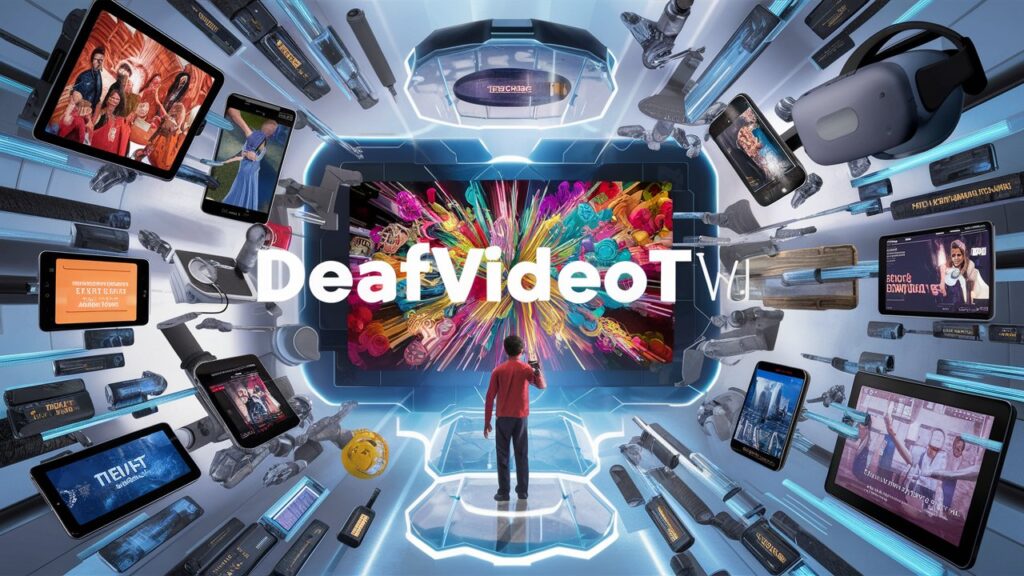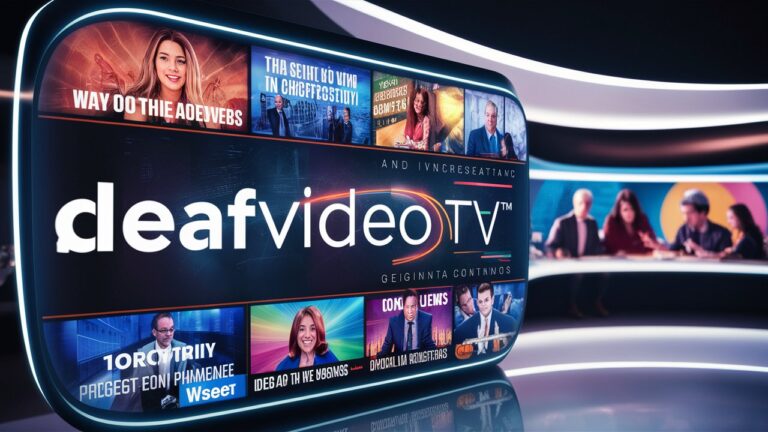Introduction
In an era where digital media dominates, accessibility remains a pressing concern for marginalized communities, particularly the Deaf and hard-of-hearing. Enter DeafVideoTV, a groundbreaking platform designed to bridge the communication gap by delivering content tailored to the needs of the Deaf community. Through innovative features like sign language integration, closed captions, and community-driven programming, DeafVideoTV is not just a media platform—it’s a movement. This article explores how DeafVideoTV is transforming media consumption, fostering inclusivity, and empowering Deaf individuals worldwide.
1. The Rise of DeafVideoTV: A Platform Born from Necessity
The Deaf community has long faced barriers in accessing mainstream media, where audio-centric content often excludes those who rely on visual communication. DeafVideoTV emerged as a response to this systemic oversight, created by Deaf advocates and allies who recognized the urgent need for equitable representation. Unlike traditional platforms, DeafVideoTV prioritizes visual storytelling, ensuring that every piece of content—whether news, entertainment, or educational material—is accessible through sign language and captions. By centering Deaf voices in its creation, the platform challenges the status quo and redefines what inclusive media looks like.
2. Key Features of DeafVideoTV: Breaking Down Accessibility Innovations
a. Sign Language Integration: The Heart of DeafVideoTV
At the core of DeafVideoTV’s mission is its seamless integration of multiple sign languages, including American Sign Language (ASL), British Sign Language (BSL), and International Sign (IS). Every video features Deaf presenters or interpreters, ensuring that native sign language users can engage with content naturally. This approach not only preserves linguistic diversity but also validates sign languages as equal to spoken ones. For example, news segments are delivered by Deaf journalists, while entertainment shows star Deaf actors, creating authentic representation that resonates deeply with viewers.
b. Closed Captions and Transcripts: Enhancing Comprehension
While sign language is vital, DeafVideoTV acknowledges the diversity within the Deaf community by providing closed captions and downloadable transcripts. These features cater to those who are late-deafened, hard-of-hearing, or prefer written language. The captions are meticulously timed and edited for clarity, avoiding the inaccuracies common in auto-generated subtitles. Additionally, transcripts allow users to revisit content offline, making education and advocacy materials more versatile.
c. User-Friendly Interface: Designed for Visual Navigation
DeafVideoTV’s interface is engineered with visual learners in mind. Large thumbnails, intuitive icons, and minimal text create a browsing experience that is both engaging and accessible. The platform also offers customizable viewing options, such as adjusting caption sizes or selecting preferred sign language dialects. This flexibility ensures that users with varying levels of hearing loss or language proficiency can navigate the platform independently.
d. Community-Driven Content: Amplifying Deaf Voices
What sets DeafVideoTV apart is its commitment to community-driven storytelling. Users can submit their own videos, ranging from personal vlogs to educational tutorials, fostering a sense of ownership and collaboration. The platform also hosts live events, such as sign language poetry slams and panel discussions, creating spaces for real-time interaction. By empowering Deaf creators to share their narratives, DeafVideoTV dismantles stereotypes and celebrates Deaf culture in its richness.

3. The Impact of DeafVideoTV on Education and Employment
Beyond entertainment, DeafVideoTV serves as a critical tool for education and professional development. Schools and universities partner with the platform to provide Deaf students with accessible learning resources, such as science demonstrations explained in sign language. Meanwhile, job seekers benefit from career workshops and interview tips tailored to Deaf professionals. Employers also use DeafVideoTV to train staff on Deaf etiquette and workplace inclusivity, bridging gaps that traditional diversity programs often overlook.
4. Frequently Asked Questions (FAQs)
Q1: How can I access DeafVideoTV?
DeafVideoTV is available globally via its website and mobile app. Subscription tiers include free ad-supported access and premium plans with exclusive content. The platform is compatible with screen readers and assistive technologies.
Q2: Does DeafVideoTV offer content for children?
Yes! The platform features a dedicated Kids’ Zone with educational cartoons, bedtime stories, and interactive games—all delivered in sign language and captions. Parents praise it for helping Deaf children see themselves represented in media.
Q3: Can hearing individuals benefit from DeafVideoTV?
Absolutely. Hearing users, including family members, educators, and allies, use the platform to learn sign language, understand Deaf culture, and advocate for accessibility. It’s a valuable resource for fostering empathy and inclusivity.
Q4: How can I contribute content to DeafVideoTV?
The platform welcomes submissions from Deaf creators worldwide. Guidelines are available on their website, emphasizing original, high-quality videos that align with their mission. Selected contributors may receive grants or mentorship.
Conclusion
DeafVideoTV is more than a media platform—it’s a catalyst for social change. By centering accessibility, authenticity, and community, it challenges societal norms and empowers Deaf individuals to claim their space in the digital world. As the platform grows, its ripple effects are felt in classrooms, workplaces, and living rooms, proving that inclusivity benefits everyone. Whether you’re Deaf, hard-of-hearing, or hearing, DeafVideoTV invites you to experience media in a way that truly sees and hears all voices.
Engage. Learn. Advocate.
Join the revolution at DeafVideoTV.com.
